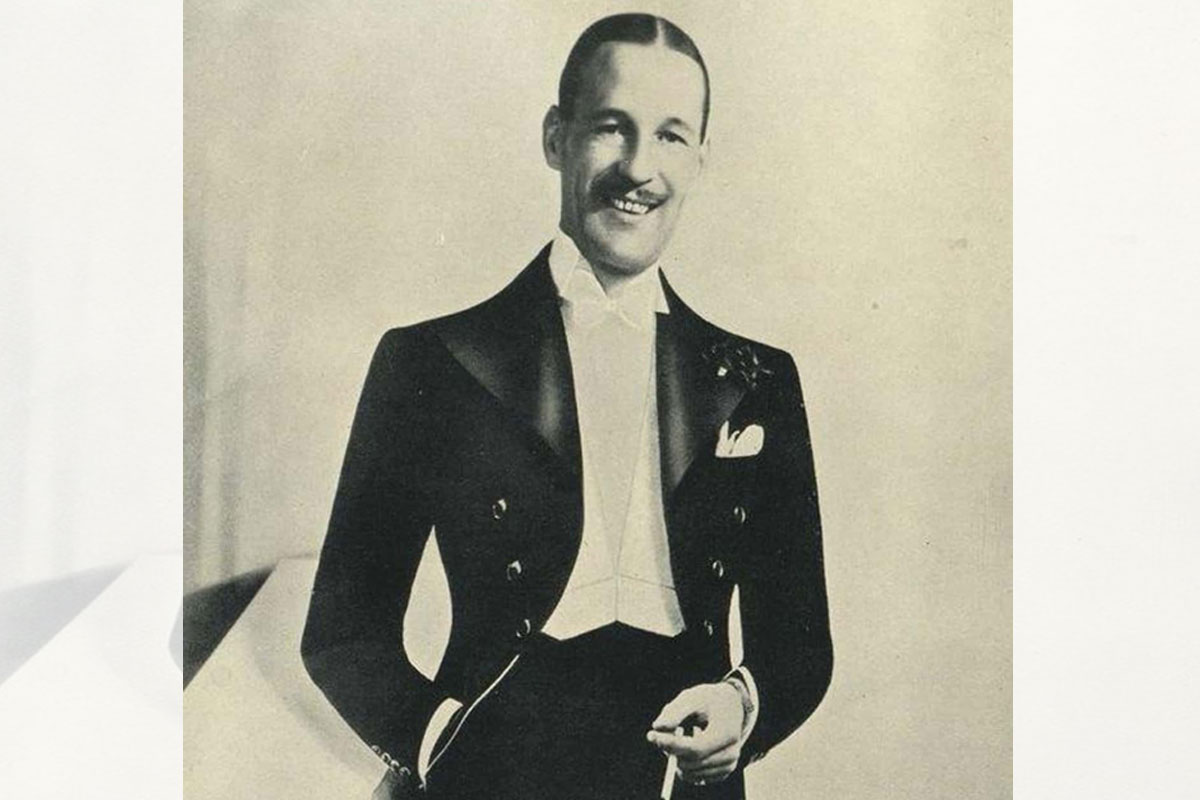
10 Times The Nazis Got Completely Outsmarted By Con Men & Magicians
Talkin
In some rare intersections of history, the “fog of war” is quite literally the puff of smoke that concludes a magician’s disappearing act. In others, the “fog” is a supernatural explanation conjured by a German soldier’s tortured mind. If you’re scratching your head right now trying to remember magic used during WWII in Saving Private Ryan or whether there was a section in your 20th century history textbook entitled “did magicians help the Allies in World War II?”, you’re not alone. The popular consciousness has all but forgotten WWII witches and all the fabulous and bizarre WWII magic technology; now feels as good a time as any to rectify that.
World War II was as much a war of mind games as it was of bullet holes. To counter the swift expansion of the highly mechanized Third Reich, the Allies got creative with secret weapons, and missions of the magical variety. In the Soviet Union, a night bomber regiment of female fighter pilots was so deadly Germans nicknamed them the Night Witches, and they became the stuff of Nazi nightmares (so there’s your answer to “were witches involved in World War II?”).
On the German Front, a group of illusionists and masters of imagery and deception (some of whom came from advertising backgrounds; big surprise there) known as the Ghost Army tormented Nazi soldiers with the movement of invisible infantries. Down in Africa, a British magician named Jasper Maskelyne played out magic tricks so grand they have been classified by the Official Secrets Act. The true nature of Maskelyne’s World War Two magic will not be made public until 2046 (so put an alarm on your phone, kids).
________________________________________
• That Time Jasper Maskelyne And His Magic Gang Made A Decoy Harbor
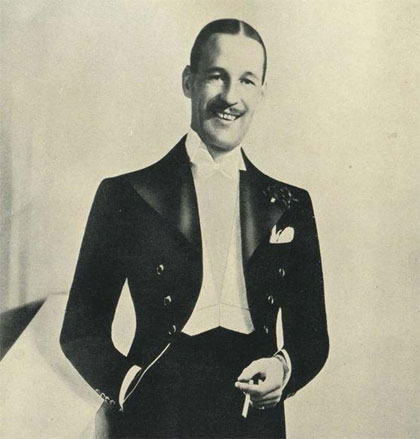 Photo: Photographer Unknown / Public Domain
Photo: Photographer Unknown / Public Domain
Full disclosure before you read any more about Maskelyne: most of the stories about his involvement in World War 2 come from him and a book written on him without much corroboration.
Though he was most definitely in the war, and contributed illusions to the Allied cause, there’s a lot of controversy about what he actually did. Some doubt The Magic Gang even existed.
With that out of the way…
Stage magician Jasper Maskelyne was displeased World War Two had taken his London public away from him. Without an audience for his magic, he had only himself to fool, and he promptly fooled himself into believing he was absolutely indispensable to the British Army. Desperate times called for desperate war magicians, and after several rejections (more times than he admits in his autobiography, Magic Top Secret) Maskelyne was deployed to the Cairo camouflage division in November 1941.
In Cairo, Maskelyne was allowed to assemble a renegade special forces unit to train in the magical arts. The group included a cartoonist, a potter, an analytical chemist, a stained glass expert, and a theatrical set designer. They were considered quite the joke, and nicknamed The Magic Gang.
The Magic Gang proved its worth when the German bombers set sights on Egypt’s Alexandria Harbor in June 1941. Alexandria was the predominant Allied naval base in North Africa, and its most critical supply point. The Magic Gang was conscripted for some classic misdirection. A decoy harbor with a similar aerial profile but smaller in size was constructed in the nearby Maryut Bay.
Relying on the cloak of darkness, the Magic Gang built dummy warships and buildings from mud and cardboard. Remote-controlled explosives were set to mimic bomb detonations, so when Germans flew overhead, they saw explosions and believed their flight commander had begun the air raid. They followed suit and unknowingly bombed a decoy harbor, whilst the real one was hidden safely nearby in blackout mode.
• When The Germans Thought The Night Witches Were Taking Experimental Feline Drugs
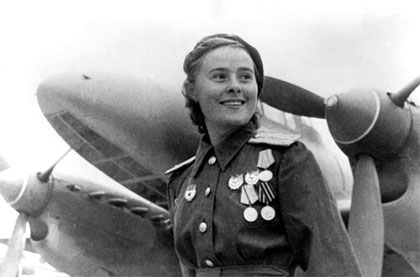 Photo: Photographer Unknown / Public Domain
Photo: Photographer Unknown / Public Domain
Recreational flying was big in pre-war Soviet Union. When civilians began volunteering for combat, hundreds of able-flier women stepped forward, but, like Maskelyne, they were initially turned away. However, desperate times put sexism on the back burner, and three all-female bomber regiments were created. The 588th night bomber regiment was formed in June 1942, comprised of women aged 17 and 26, and given flimsy Po-2 bombers made of wood and canvas. The planes weren’t meant for combat, but the women flew 30,000 missions in them, while wearing men’s boots with scrunched up newspaper to fill the extra space their legs and feet couldn’t.
The war waged by the 588th was as psychological as it was physical. Their nighttime harassment bombing assured Nazi soldiers were sleep deprived and increasingly paranoid. Pilots turned off their engines as they approached German camps, so soldiers couldn’t hear the sounds of the plane; instead, they heard a spooky witch’s broomstick-like “whooshing” as the bombers glided in. By the time they heard this, it was too late.
The Nazis nicknamed the 588th Nachthexen, or“night witches,” and the unit wore the label with pride. Enemy fear began to do their job for them. The psychological terror instilled by the Nachthexen prompted Nazis to create mythology to help explain how they could be so tortured and defeated night after night. They began to believe the Night Witches were the result of military experiments, women given special pills and injections to give them feline dexterity and vision at night.
• That Time An Ex-Con Magicked His Way Into Becoming a Nazi Double Agent
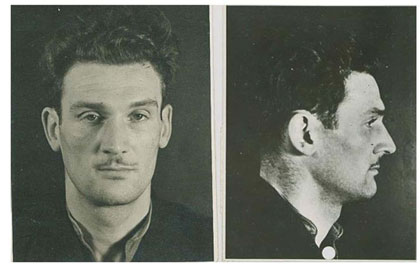 Photo: Photographer Unknown / Public Domain
Photo: Photographer Unknown / Public Domain
In 2001, MI5 released documents linking the initial success of Eddie Chapman’s time as an undercover Nazi with everyone’s favorite war magician, Jasper Maskelyne. Yet bad boy double agent Chapman’s relationship with the military did not begin well.
In 1931, teenage Chapman abandoned his job as a Tower of London guard to follow a girl he had just met. He was sentenced to 84 days in prison for abandoning his post and, once released, spun into a life of petty crime, committing numerous frauds and thefts and even working as a safecracker for London’s West End gangs. In 1942, he found himself once again in prison, and willingly traded his prison sentence for the chance to serve as a spy. Nicknamed Agent ZIGZAG (after his erratic path in life), he became one of the most significant double agents of WWII.
To test Chapman’s allegiance, the Nazis commanded him to sabotage the De Havilland aircraft factory in Hatfield, England. Enter Maskelyne, who created the illusion of sabotage at the factory so Chapman could get cozy with the Jerrys.
Damaged aircraft were fashioned of papier-mâché. Large pieces of canvas were painted and torn to create the illusion of a destroyed building. Debris was scattered around the factory. Fake headlines were run in local papers. It worked like magic. A German reconnaissance team took aerial photographs of the site and declared Chapman’s sabotage a success. He went on to become beloved by both the Germans and the British; he so thoroughly convinced the Germans of his devotion to them he is the only British citizen to have ever been awarded the German Iron Cross.
• When The Nazis Left Their Post To Pursue A Ghost Army
 Photo: US Department of Defense / Public Domain
Photo: US Department of Defense / Public Domain
The use of magicians in WWII was not limited to the Magic Gang in Egypt. On the German front, a gang of illusionists comprised of artists, designers, engineers, art school students and employees, advertisers, and other creative thinkers, was assembled in an elite force of tactical deception known as the Ghost Army. The gag order on the Ghost Army’s activities only lasted four decades, so there’s hard evidence of their illusions.
Take, for instance, Operation Brest, designed to confuse Nazi perception of the American forces in Germany. For this mission, the Ghost Army created dummy trucks and mock uniforms for the most armored and deadly Allied divisions and drove themselves in and out of towns to make a show of their arrival. They made sure they always had soldiers sitting on the backs of trucks to make it look as though each vehicle was bursting with weapons and fighters. In doing so, they led Germans to believe there were far more Allied divisions in northern France than actually existed.
The Ghost Army’s mission was to draw German forces away from Brest, so the Allies could take the city easily and with minimal losses, which is precisely what happened. The Germans, deceived by the illusions and misdirection of the Ghost Army, arrived in an empty forest armed, ready to face a foe that had never been there. Meanwhile, the Allies took Brest, and important foothold in the lead up the Normandy invasion.
• When The Night Witches Flew Planes Like Broomsticks
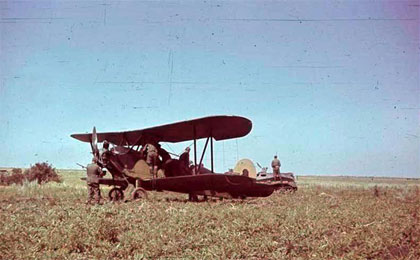 Photo: Photographer Unknown / German Federal Archives / Bundesarchiv, Bild 169-0112 / CC-BY-SA 3.0
Photo: Photographer Unknown / German Federal Archives / Bundesarchiv, Bild 169-0112 / CC-BY-SA 3.0
The “whooshing” sound of the Night Witches Po-2 planes was an accident, but the unit’s emulation of broomsticks didn’t end there. Because their planes were small and light, the Night Witches had unprecedented maneuverability. They flew lower to the ground than Nazi bombers, which allowed them tremendous accuracy when it came to annihilating German necessities like supply depots and encampments, and they zipped around in ways no heavy German plane could mimic.
On top of this, the Po-2’s maximum speed was slower than Nazi bombers stall speed (the speed at which a plane is too slow to support itself in the sky), which made it extremely difficult for Nazi planes to pursue them. Night Witches flew in formations of three, two of which were decoys. The decoys flew straight over Nazi camps with their engines on before splitting off into opposite directions. The third would then glide in under the cover of night, engine off. This formation continue until each plane had dropped its bombs.
The greatest danger faced by Night Witches was the flammable organic material of which their planes were made. Enemy fire could light up the bombers like broomsticks made of dry hay, but the maneuverability of the planes made them hard to hit. And these same dangerous organic materials helped when it came to camouflage. The lack of shiny metal made the planes hard to spot in the sky, and their tiny engines couldn’t be picked up on the radar or infrared scanners.
To German soldiers, the zippy wooden planes really did seem like the flying broomsticks of fairy tales, as did the Night Witches habit of disappearing into the night after a violent, surprise raid.
• That Time The “War Magician” MacGyvered Clues And Weapons To POWs
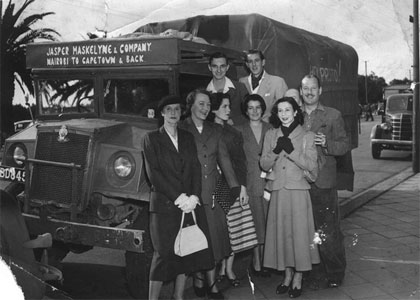 Photo: Photographer Unknown / Public Domain
Photo: Photographer Unknown / Public Domain
Before heading to Cairo, Jasper Maskelyne convinced the Allies he was more than a party clown by devising essential small-scale magic technology. The Royal Engineers needed ways to send auxiliary devices to Allied prisoners of war. In a surprising twist of empathy, the Nazis allowed POWs to receive care packages, but you couldn’t just send maps and compasses through Nazi post and expect them to reach their destination.
Enter Maskelyne, who found disguising tools of escape in ordinary objects just as thrilling as eating razor blades on stage, as he did every night in London for years. In some packages, he crafted miniature compasses set in coat buttons; in others, he painted intricate maps onto decks of cards. He even assembled switchblade hair combs.
These tricks of practical magic helped numerous prisoners escape, and convinced the Allies that perhaps magic could be used in World War II.
• That Time The Magic Gang Created A Fleet Of Decoy Tanks And Hid Real Tanks In Truck Shells
 Photo: United States Army / Public Domain
Photo: United States Army / Public Domain
In October 1942, the Allies gained the upper hand on the African Front, and plotted a decisive victory to prevent the power balance from tilting back to the Nazis. In order to plan and carry out such an attack, the Allies needed a major distraction. Thus, Operation Bertram, which involved tricking the German Afrika Korps into believing an invasion was coming from the south of Egypt, when it was coming from the north.
The red herring invasion was composed of countless dummy tanks and tanks disguised as trucks with decoy shells. South of the Nazi power base, the Allies set out decoy tanks and created the illusion of a major construction project, complete with supply dumps, radio chatter, piles of ammunition, railway lines, storage buildings, and a water pipeline.
Meanwhile, real tanks were moving in from the north disguised as unarmed trucks. On October 23, 1942, the attack from the north came as a complete surprise to the Germans. The mission succeeded in all its goals and resulted in the capture of a Nazi general.
Although Maskelyne claimed credit for Operation Bertram, some believe another camouflage expert masterminded the operation. Allegedly, the real brains behind Bertram died before the war ended, and didn’t get to write a tell-all memoir like Maskelyne (another reason to set an alarm for those 2046 document releases).
• When The White Lily Of Stalingrad, A 20-Year-Old Jewish Girl, Started Blowing Nazis Out Of The Sky
 Photo: Photographer Unknown / Public Domain
Photo: Photographer Unknown / Public Domain
The 588th night bomber regiment were not the only sky witches who ran amok in Nazi airspace. The 586th all-female regiment boasted the presence of Lydia Litvyak, the White Lily of Stalingrad. Lydia began flying when she was 14, and trained many of the Night Witches. In 1942, on her third mission, she became the first woman in Soviet history to shoot down an enemy aircraft. A few minutes later, she did it again.
One of the first planes Litvyak shot down belonged to German Staff Sergeant Erwin Maier, an 11-kill recipient of the Iron Cross. The Russians captured Maier, and he demanded to meet the man who shot him down (more upset by the blow to his ego than his capture). When 20-year-old Litvyak revealed herself, he was in disbelief (some extra salt in the wound: she was Jewish). She recounted their air battle blow-by-blow.
Litvyak was a larger-than-life legend, racking up 14 kills and inspiring fear in Nazi fighter pilots who believed her to be more than human, much like her fellow witches in the 588th. However, her career only lasted a year; she disappeared in August 1943. Her remains, found in 1979, revealed she was shot down.
• When The Ghost Army Used Sonic Deception To Confuse The Hell Out Of Nazis
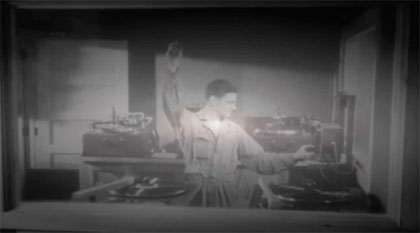 Photo: PBS / Youtube
Photo: PBS / Youtube
The Ghost Army only fired ammunition in a handful of battles. Its real weapon was methodical psychological torment employed to waste Nazi resources. One of the most effective illusions of the Ghost Army was sonic warfare. It was estimated by the Allies that Germans gathered 75% of their intelligence intercepting radio signals. The Ghost Army captured a unit of Nazi radio interceptors and used them to learn how to mimic German radio transmissions. They made recordings meant for Germans, as well as fictional messages from Allies to Allies, to create uncertainty in the Nazi intelligence community.
Sonic warfare also included broadcasting pre-recorded sounds such as troop chatter and vehicle movements, so the Nazis were perpetually confused about where Allied divisions were and how many of them existed at any given time. In preparation for unleashing this new kind of psychological warfare, the Ghost Army spent three weeks recording transcription disks with a broad selection of sounds like gears being changed, hammers being dropped, soldiers cursing, bridges being built, etc. These sounds compiled on multi track wire recordings to ensure the sound wouldn’t skip like it would on a record and pumped out of massive speakers mounted on half-tracks and driven around. The sound system used projected these recordings up to 15 miles.
• That Time Maskelyne Claims To Have Hidden The Suez Canal With A Laser Light Show
 Photo: Photographer Unknown / No Known Copyright Restrictions
Photo: Photographer Unknown / No Known Copyright Restrictions
The most contested piece of magical technology in WWII is Jasper Maskelyne’s rotating Dazzle Lights, which supposedly saved the Suez Canal. There are photos of the device being assembled (such as the one above), but no official documents affirming the plan was carried out in the way Maskelyne claimed in his book.
According to Maskelyne, he and his Magic Gang designed and constructed a rotating structure made of coned mirrors that spun and reflected powerful searchlights. When the device was set in motion, it created dazzling beams nine miles high that made it impossible for Nazi bombers to get anywhere near the Suez Canal. Some of his work has been recreated by modern magicians, but the world will have to wait until 2046 to find out what really went down those years in Egypt.
ranker.com





















